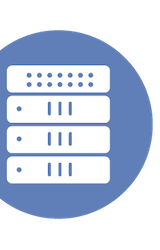Tech Field Day Coverage
Our delegate panel includes independent writers and thought leaders, and we collect their coverage of the event, Tech Field Day presentations, and sponsoring companies here.
Looking ahead to Mobility Field Day 2
Jonathan Davis has been to many Tech Field Day events before, but is especially interested in this Mobility Field Day. He sees the event as another step in his career development and feels like the theme really resonates with his passions. Looking forward at the presenters and delegates, he is excited for great discussions with innovative ideas and hopes to see constructive participation from everyone.
Read More:
Looking ahead to Mobility Field Day 2
Mobility Field Day 2
Mitch Dickey gives a preview of each presenting company at Mobility Field Day. He mentions Mist System’s easy to set up, intuitive AP, Nyansa’s network monitoring approach, Netscout’s G2 AirCheck, and more. He is also looking forward to hearing more about Cape Networks, a company he is not too familiar with going in to the event. Mitch knows this will be a great event and plans on blogging about the week’s highlights.
Read More:
Kicking off Cloud Field Day 2
Tim Crawford is looking forward to Cloud Field Day. In this post, he gives a rundown of the presenters, many of which he is familiar with, but some not so much. Tim is always on the lookout for “new, disruptive companies” and hopes to find something new at Cloud Field Day, which he will be tweeting about using the hashtag #CFD2.
Read More:
Welcome to Cloud Field Day 2
Eric Shanks is excited to be attending Cloud Field Day in Silicon Valley. Here he lists the presenting companies, lays out the schedule, and relays the delegate list and their respective Twitter handles. He will be sure to post follow-ups post-event on several presenters.
Read More:
Orchestrating Containers with Nirmata
After Cloud Field Day, Eric Shanks reports that Nirmata’s “value proposition is to make managing and deploying container applications on Kubernetes clusters easier.” He says that Nirmata allows the management of multiple Kubernete clusters in different cloud providers with a single orchestration layer, also reporting that their solution was easy to set up and has a clean, visible console.
Read More:
Orchestrating Containers with Nirmata
Mist Systems Polishes Their Message at Mobility Field Day 2
Lee Badman compares the positives and negatives he saw from Mist System’s Mobility Field Day presentation. He compliments Mist as the “real deal” when it comes to AI and Machine Learning, says they have mastered the UI, and is very excited for their virtual BLE beacon. On the other side, however, he worries that Mist is a bit late to the WLAN party and is up against some very established players.
Read More:
Mist Systems Polishes Their Message at Mobility Field Day 2
Mist Systems: A first look
At Mobility Field Day, Jake Snyder was pleasantly surprised by Mist Systems. In this post he talks about the easy to use, well-designed dashboard as well as the AP41, which Mist sent to all delegates before the event. Jake was very impressed by the AP41, saying it ran flawlessly with no connection issues whatsoever, only lamenting that the lack of issues did not allow him to see the AI part of Mist’s product in action.
Read More:
Nirmata is the cross-cloud orchestrator of orchestrators
After Cloud Field Day, Joep Piscaer calls Nirmata the “cross cloud orchestrator of orchestrators,” describing their approach to cloud management as “clean, simple and well thought out.” He also compliments their application modeling feature which enables cross-cloud migrations and deployment saying that with the right engineering effort, it could become one of Nirmata’s truly differentiating features.
Read More:
Nirmata is the cross-cloud orchestrator of orchestrators
The History of The Wireless Field Day AirCheck
Tom Hollingsworth wraps up Mobility field Day by telling the story of the Wireless/Mobility Field Day AirCheck. Dating back to the first Wireless Field Day, exchanging the AirCheck is a long-running tradition. At the latest Mobility Field Day, Netscout surprised the delegates with a new and improved G2 AirCheck to continue the tradition.
Read More:
The History of The Wireless Field Day AirCheck
Cloud Field Day 2 Preview: Scality
Julian Wood is interested in hearing more about Scality at the upcoming Cloud Field Day. Here he overviews the company before discussing Zenko, Scality’s open source mulit-cloud controller. He also looks forward to hearing more about how Scality sees the growth and use case of non public cloud object storage.
Read More:
Cloud Field Day 2 Preview: Scality
Cloud Field Day 2 Preview: Platform9
Julian Wood introduces Platform9, a regular Field Day event presenter returning for Cloud Field Day this month. First, he outlines their past products before moving into what he is most interested in hearing more about, Open Source and Serverless.
Read More:
Cloud Field Day 2 Preview: Platform9
Is there still a need for specialized administrators?
Mike Preston asks the question, “is the storage admin dead?” in response to Andy Banta’s NetApp SolidFire presentation at Storage Field Day. He talks storage provisioning and performance as well as quality of service before praising NetApp SolidFire for having “taken some very difficult and complex tasks and turned them into a simple policy.”
Read More:
Is there still a need for specialized administrators?
Mobility Field Day 2 Is Next Week! Are You Ready?
Robert Boardman is very excited to be a part of Mobility Field Day. In this post, he shares the schedule and the research he did in preparation for each company’s presentation.
Read More:
Mobility Field Day 2 Is Next Week! Are You Ready?
Cloud Field Day 2 Preview: Rubrik
Here is Julian Wood’s Cloud Field Day preview for Rubrik. Here he talks cloud instantiation for app mobility, Rubrik’s RESTful API, and more.
Read More:
Cloud Field Day 2 Preview: Rubrik
Cloud Field Day 2 Preview: HPE Nimble Storage
As Cloud Field Day approaches, Julian Wood talks HPE Nimble Storage. He is especially interested on what Nimble Storage has been up to since their acquisition and how it relates to cloud.
Read More:
Cloud Field Day 2 Preview: HPE Nimble Storage
Heading to Cloud Field Days (2) next week
Ben Kepes is looking forward to a different kind of conference, Cloud Field Day! Here, he explains the event, goes over each presenter, and gives his opinion on what they have been up to in the cloud field.
Read More:
Heading to Cloud Field Days (2) next week
Cloud Field Day 2 Preview: Gigamon
Julian Wood is looking forward to hearing from Gigamon at Cloud Field Day. Here, he overviews Gigamon’s history and products, but is more interested in what Gigamon will do moving forward, especially as it relates to public cloud.
Read More:
Cloud Field Day 2 Preview: Gigamon
CFD2 Prep: Nirmata
Justin Warren has some questions that he would like to discuss with Nirmata at Cloud Field Day next week. He looks forward to figuring out Nirmata in order to better understand their products and goals.
Read More:
Cloud Field Day 2 Preview: ServiceNow
Julian Wood says ServiceNow is “trying to take traditional enterprise IT Service Management to the next level” in this preview article for their Cloud Field Day presentation. Julian is very interested in ServiceNow providing multi-cloud service management and hopes to hear more at Cloud Field Day.
Read More:
Cloud Field Day 2 Preview: ServiceNow
CFD2 Prep: Accelerite
Getting ready for Cloud Field Day, Justin Warren introduces Accelerite. He focusses on Accelerite’s Rovius and is especially curious about its hybrid nature. Justin is looking forward to what Accelerite has to offer and what they focus on at Cloud Field Day.
Read More:







